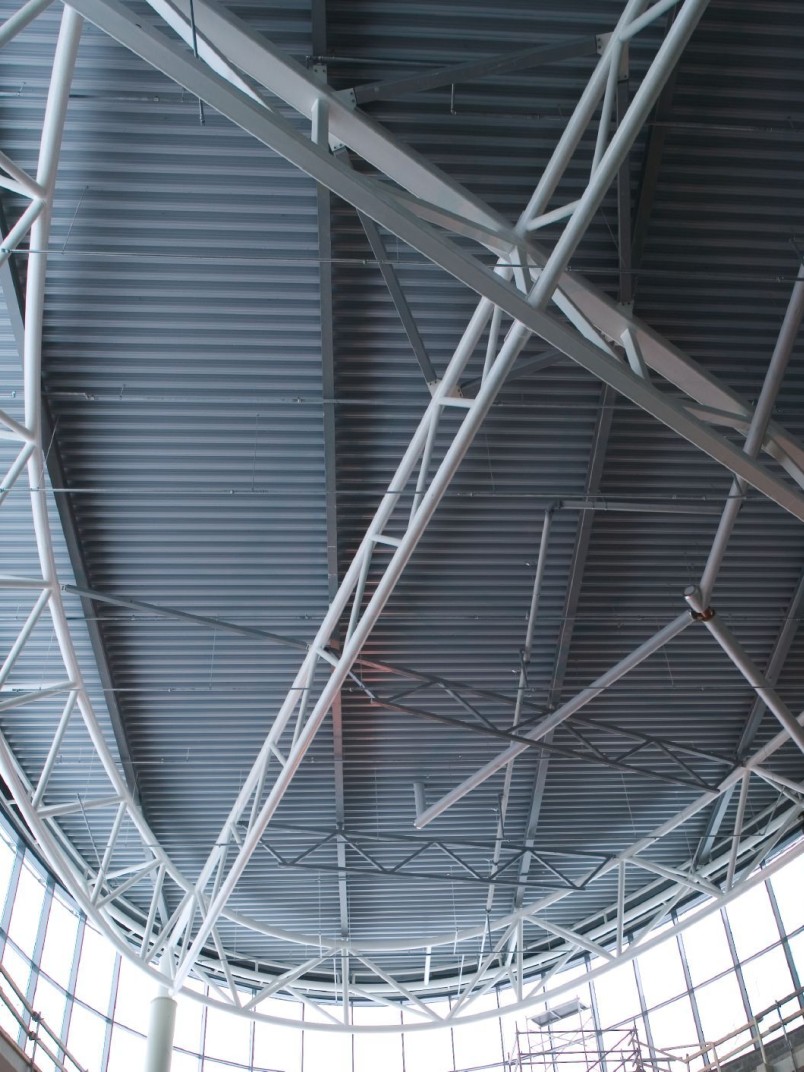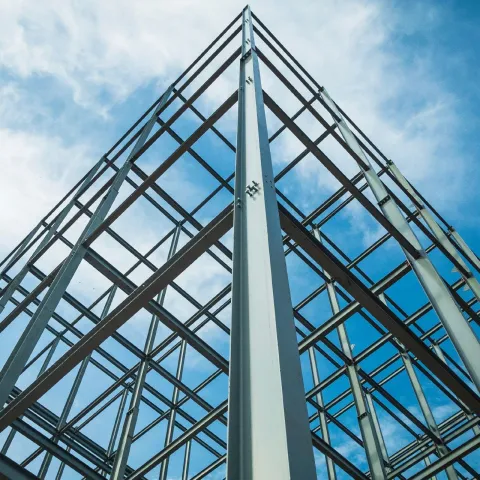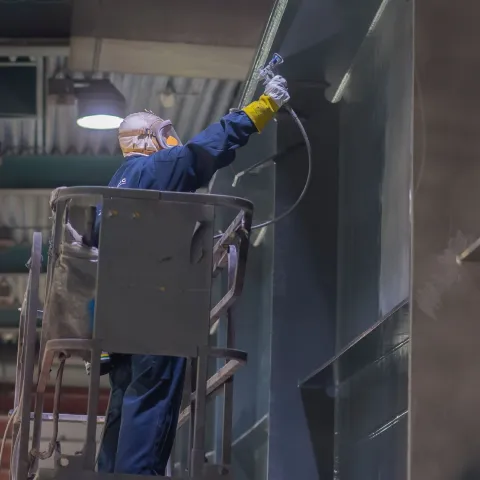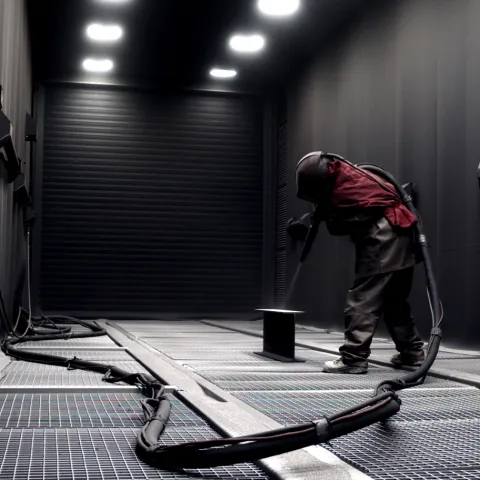FAQ – Metal surface treatment

Tikkurila offers a wide range of painting systems for metal surfaces that meet the highest quality standards. In this post, we’ll answer some of the most frequently asked questions about metal surface treatment and metal coatings products.
How can I choose the right metal coating products for my company?
When choosing the right coating product for your specific needs, there are several different factors to consider.
First, take the time to consider your goals with metal coatings. In what kind of environment will the paint be used, and how will your customers use the end product? Also ask yourself how long you need the paint to hold, what painting system standards you need to comply with, and what your company’s mindset is towards sustainability. Consider your current processes, including your equipment, what type of metal surfaces you’re working with, and whether you paint or assemble first.
Acknowledge your project timeline and deadline. Ask yourself what drying time you need, when you’re able to pack the dried product, and how much you should be able to paint in one day.
Reflect on your budget, keeping in mind that some products require a higher initial investment, but pay off in the long term.
How can I reduce my VOC emissions?
Using water-borne coatings is one powerful way to reduce your VOC emissions. In fact, the reason why many companies choose to use water-borne products is to become more sustainable. While solvent-borne products can emit high levels of VOCs, water-borne products emit low or no VOCs. The environmental impact of water-borne products is much smaller than that of solvent-borne products, especially in the application phase. That’s because almost only water evaporates from water-borne products. And since you can clean wet water-borne paint with water, there are no extra VOC emissions from the cleaning process.
Using certain high-solids products for metal surfaces that have very low VOC content is another way to decrease harmful solvent emissions.
How can I ensure the health and safety of those working with industrial paints and coatings?
Many companies choose to use water-borne products to improve users’ health and safety and reduce explosion risk. Using water-borne coatings means less risk, irritation, and other harmful effects for the user. But no matter what metal coatings you work with, users always need to properly protect themselves. Users should wear protective gloves, clothing, and eye protection, as well as respiratory protection in case of inadequate ventilation. It’s dangerous to inhale fumes during the application process for both water-borne and solvent-borne products. But during the drying process for water-borne products, water instead of organic solvents are evaporating, so inhalation is not as hazardous.
What types of metal coatings products does Tikkurila offer?
We offer a range of metal coating products from traditional alkyd paints to modern high-tech DTM polyurethanes including solvent-borne primers and topcoats, more environmentally sound high-solids paints, solvent-free coatings, and water-borne products.
Our solvent-borne products for metal surfaces ensure cost-effective and long-term protection against corrosion and wear.
Our high-solids products for metal surfaces have a very low VOC content, which helps decrease harmful solvent emissions.
Our water-borne products for metal surfaces compare favourably with those of solvent-borne paints. They fully comply with exacting industrial quality standards and the latest environmental regulations.
Are Tikkurila's industrial paints and coatings properly tested and certified to industry standards?
All of our metal coatings comply with ISO 12944—the global corrosion protection standard. We also have paint systems approved according to other standards as well, including Norsok (Norway), Silko (Finland), and GOST (Russia).
What is the difference between water-borne and solvent-borne paints?
Metal coatings are categorized as solvent-borne or water-borne depending on the solvent used, which can either be a chemical or water. The solvent is what keeps the paint as a liquid.
The purpose of both types of metal coatings is the same: to protect metal products from corrosion. But the features and properties of the binders in solvent-based coatings are different than in water-based coatings. Thus each one performs differently according to different parameters, including:
- VOCs
- Health & safety
- Shelf life
- Anti-corrosive and weatherability properties
- Application conditions
- Equipment, cleaning, and disposal requirements
For more information, read Water-borne vs. solvent-borne metal coatings: A comparison for industrial applications.
Can water-borne coatings really protect metal surfaces from corrosion?
Yes, water-borne coatings do protect against corrosion—it’s one of the product’s main purposes.
However, whether metal coatings are solvent-borne or water-borne actually has no effect on anti-corrosion properties. The chemical or water-based liquefying agent in paint is only carrying the paint film that forms corrosion-inhibiting materials to the substrate. So the water in water-borne products evaporates from the film, just as chemical solvents do.
It’s important to look at specific water-borne and solvent-borne products when checking the anti-corrosive properties of metal coating solutions. For example, water-borne acrylic products could offer better weatherabilty than some solvent-borne products, especially when it comes to colour and gloss stability.
What are the benefits of using water-borne coatings?
It’s true that water-borne solutions are more expensive overall compared to alternative options, and they require more thorough surface preparation. However, the investment is worth it if your company prioritizes sustainability, reducing your carbon footprint, and human safety.
Water-borne products have a more positive effect on the environment as they emit lower levels of VOCs. With the rising importance of sustainability and increasingly strict environmental legislations, many companies are choosing to use water-borne products. These products are also less dangerous for users to handle, allowing for safer working conditions. The thinner in water-borne paints is water, whereas the thinner in solvent-borne paints is a chemical solvent. With water-borne products, almost only water—rather than toxic chemicals—evaporates into the air when the paint dries. Overall, water-borne coatings are a safer choice for both the environment and the users handling the products.
Is more maintenance required when working with water-borne products?
Water-borne coatings require the same maintenance period as other metal coatings—except in extreme conditions. While some maintenance will probably be needed after the initial application, the right surface preparation and paint application can significantly improve the coating’s performance lifetime.
Besides in extreme conditions, water-borne solutions require the same maintenance period as other alternatives. Just like solvent-borne coatings, water-borne coatings are properly researched and tested to ensure quality and durability. A little maintenance will most likely be needed along the way, but correct surface preparation and paint application will improve the coating’s performance lifetime.
As with solvent-borne products, you can choose from a wide selection of repair and maintenance products for industrial metal surfaces.





